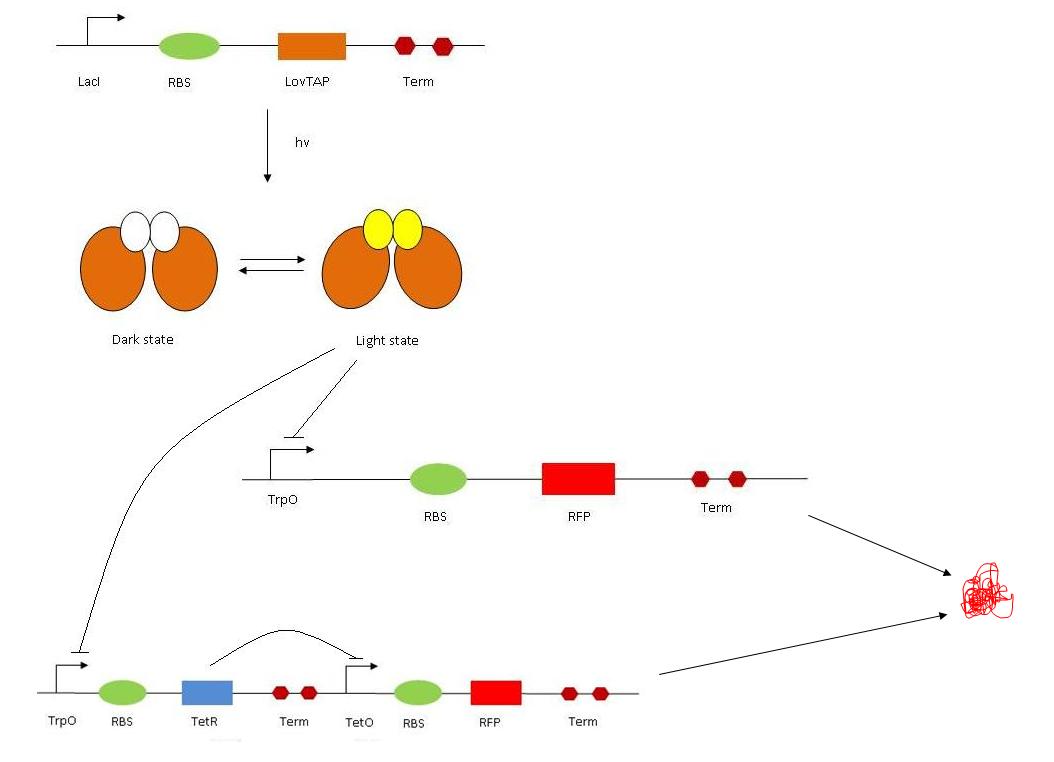Team:EPF-Lausanne/Strategy
From 2009.igem.org
Contents |
Cloning strategy
Our aim was to create a biobrick containing LovTAP under the influcence of an inducible promoter. This part needed to contain (in order) the inducible promoter (LacI), RBS (ribosome binding site), the LovTAP gene (that was generously sent by Pr. Sosnick form the University of Chicago) and finally a terminator (Term). This entire part was of course to be flanked by the standard prefix (E,X) and suffix (S,P). In order to synthesize this part, we proceeded in three steps :
1. We ligated the LovTAP gene into the terminator (we used a double terminator).
2. We also ligated LacI into RBS.
3. Finally we ligated these two parts together to obtain our biobrick (LacI-RBS in the LovTAP-term part).
So finally we got :
With this biobrick, we have an inducible system : when we add IPTG, the promoter activates the expression of the LovTAP protein.
Read out systems
Once we have our protein LovTAP produced, we need a read out system to assess whether the protein was functional or not. Therefore, we designed two different read out systems :
1. The read out 1 (RO1) contains the tryptophan operon followed by RBS, RFP and Term. In normal conditions, RFP should be expressed (so we should see some red fluorescence). This is because the Trp promoter is constituitively ON. The Trp repressor (TrpR) only binds to DNA if there is tryptophane available in the medium. The activated LovTAP protein (when illuminated at 470 nm) binds to the Trp operon and repress the RFP gene, exaclty as theTrpR in presence of Trp would do. We should therefore observe a decrease in red fluorescence. In order to characterize the read out, we tested it in different conditions : with or without TRP, with different amount of TRP. With adjunction of Trp, we would expect the fluorescence to decrease.
2. The read out 2 (RO2) is composed of Trp op, RBS, TetR, Term and then TetR op, RBS, RFP and Term. It is a double repressor system : TrpR/LovTAP bind to the Trp op, so repressing the expression of TetR. On the other hand, TetR (if expressed) inhibits the production of RFP by acting on the TetR op. The final result is that if LovTAP is active, red fluorescence should increase as RFP is expressed. Trp has the same effect as LovTAP but we also used ATC (anhydrotetracyclin) : ATC has the same effect as Trp, when it binds to TetR it prevents binding to its promoter sequence Tet op ! When we add Trp, we should therefore have the same effect as with an active LovTAP : production of red fluorescence. ATC will increase the level of RFP in both cases.
So all this function like this :
 "
"






